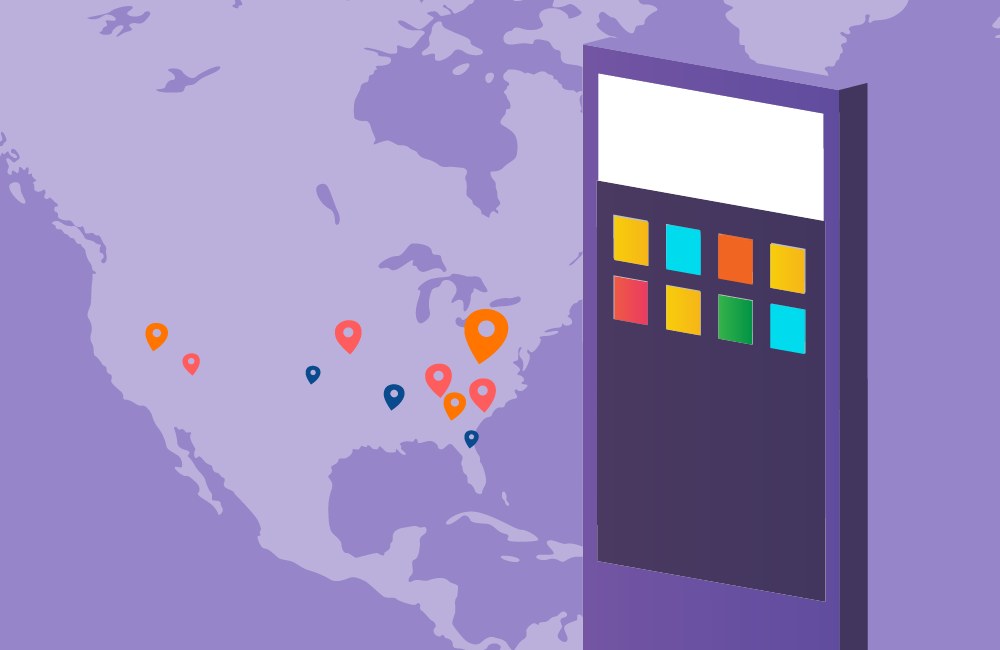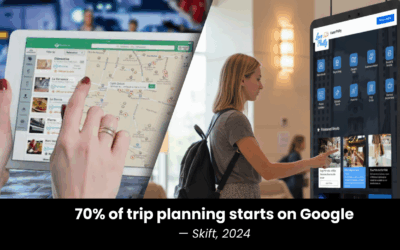The landscape of interactive tourism is rapidly evolving, with digital kiosk technology playing an increasingly important role. Advanced features such as AI-driven recommendations, touchless interfaces, and virtual reality experiences are transforming the way tourists explore and experience new destinations. Here’s a glimpse into how these innovations are shaping the future of tourism.
AI-Driven Recommendations
Artificial Intelligence (AI) has revolutionized the concept of personalized experiences. AI-driven digital kiosks can provide tailored recommendations based on a user’s preferences, past activities, or real-time data. This means tourists can receive personalized suggestions for attractions, dining, shopping, and more, enhancing their overall travel experience.
Touchless Interfaces
In the wake of global health concerns, touchless technologies have gained significant traction. Digital kiosks equipped with voice recognition or gesture-based controls allow tourists to interact with information systems without physical contact, offering a safer and more hygienic alternative to traditional touchscreens.

Virtual Reality Experiences
Virtual Reality (VR) has opened up new possibilities for immersive tourism. With VR-enabled digital kiosks, tourists can take virtual tours of attractions before visiting them in person, helping them plan their itinerary more effectively.
Here are some ways these advancements in digital kiosk technology can enhance the tourism experience:
- Personalization: AI-driven recommendations can tailor the tourist experience to individual preferences, ensuring every traveler has a unique and memorable journey.
- Safety: Touchless interfaces reduce the need for physical contact, making interactions with digital kiosks safer and more hygienic.
- Convenience: Digital kiosks offer instant access to a wealth of information, from local attractions to public transit schedules, all in one place.
- Immersive Experiences: VR capabilities allow for virtual exploration of destinations, providing a preview of what to expect and aiding in travel planning.
- Accessibility: Language translation features make information accessible to international tourists, breaking down language barriers and promoting inclusivity.
Digital kiosk technology is undoubtedly shaping the future of interactive tourism. As these technologies continue to evolve, we can look forward to even more innovative ways to enrich our travel experiences.
Revenue Generating Opportunity
Digital kiosks present a unique opportunity for revenue generation. Businesses can leverage these interactive platforms to advertise products, promote special offers, or sell goods and services directly from the kiosk. For instance, a restaurant could use a digital kiosk to upsell premium menu items, or a tourist attraction could sell tickets via a kiosk, reducing the need for manual transactions. Even beyond direct sales, digital kiosks can be used to gather data on customer behavior and preferences, which can subsequently be used to refine marketing strategies and drive sales growth.
The following entities could greatly benefit from this revenue generation:
- Restaurants and Cafes: Upselling menu items or facilitating quick, self-service ordering.
- Retail Stores: Promoting special offers, showcasing new products, and enabling self-checkout.
- Tourist Attractions: Selling tickets, offering premium experiences, and promoting gift shop items.
- Hotels and Resorts: Offering room upgrades, special packages, or additional services like spa treatments.
- Public Transport Services: Selling tickets or passes, thus reducing the need for manned ticket counters.
- Event Venues: Facilitating ticket sales, merchandise purchases, and food and beverage orders.
- Marketing Agencies: Gather valuable customer data to refine marketing strategies.

Frequently Asked Questions about Emerging Technology in Digital Kiosks
What is the role of AI in digital kiosks?
AI plays a crucial role in personalizing the user experience. It can provide tailored recommendations based on a user’s preferences, past activities, or real-time data, enhancing the overall experience.
How do touchless interfaces work in digital kiosks?
Touchless interfaces in digital kiosks work through technologies like voice recognition or gesture-based controls. These allow users to interact with the kiosk without physical contact, making it safer and more hygienic.
What kind of experiences can VR offer in digital kiosks?
VR can provide immersive experiences, like virtual tours of attractions, giving tourists a preview of what to expect and aiding in their travel planning.
How do digital kiosks improve convenience for tourists?
Digital kiosks provide instant access to a wealth of information, from local attractions to public transit schedules, all in one place. This makes it easier for tourists to plan their trips and navigate new destinations.
How do digital kiosks promote accessibility?
Many digital kiosks feature language translation options, making information accessible to international tourists. This breaks down language barriers and promotes inclusivity.
What is the future of digital kiosks in tourism?
The future of digital kiosks in tourism looks promising, with continued advancements in AI, touchless technology, and VR. These innovations will continue to enhance personalization, convenience, safety, and immersive experiences for tourists. Working digital kiosks can play a part in any tourism business plan.
Want to Learn More? HootBoard is Here to Help
As we’ve seen, the future of interactive tourism and beyond is being shaped by the innovative use of digital kiosks. Offering personalized experiences, safety, convenience, immersive explorations, and a new avenue for revenue generation, digital kiosk technology is a game-changer. If you’re looking to leverage this technology for your business or destination, consider partnering with a provider like HootBoard. Their advanced digital kiosk solutions can help you stay ahead of the curve, enhancing the user experience while boosting your bottom line. Contact HootBoard today to learn more and get started on your journey toward the future of interactive engagement.




